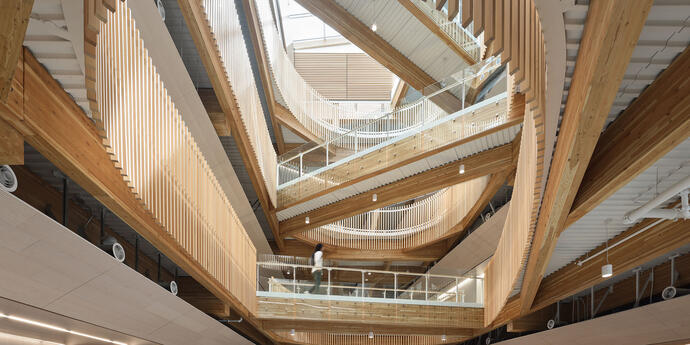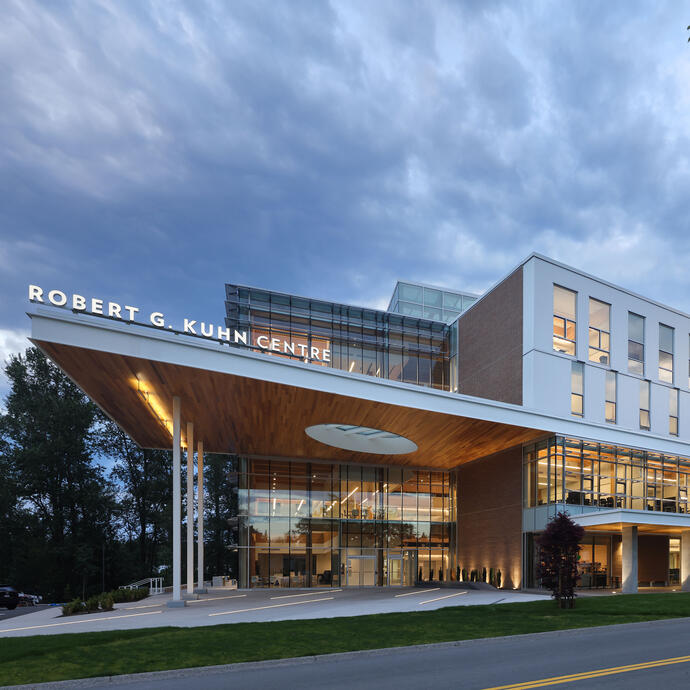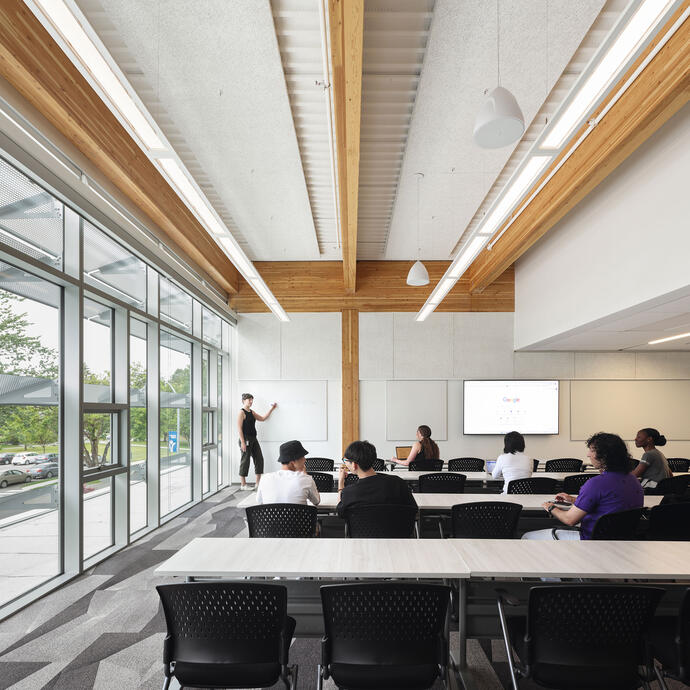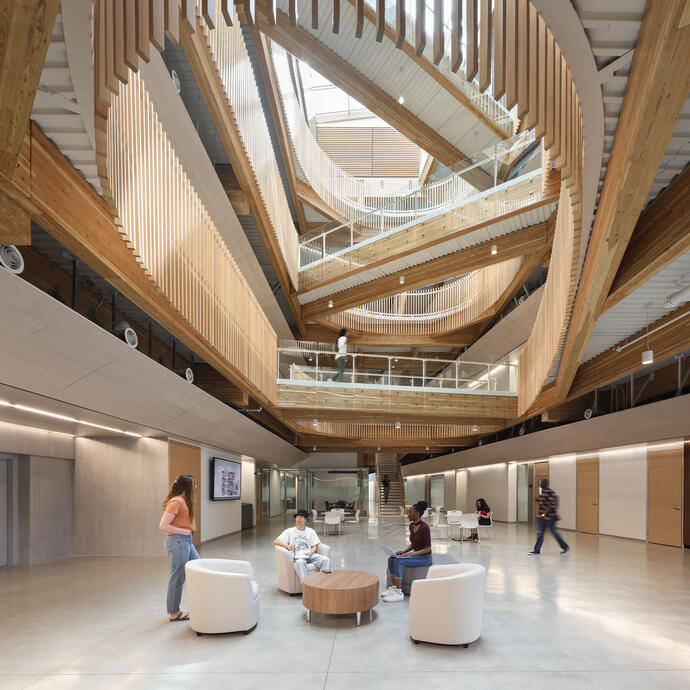
Innovation you can see (and feel).
The Robert G. Kuhn Centre at Trinity Western University (TWU) is more than just the entrance to the University’s Langley campus; it’s also a landmark mass timber building in its own right.
The 73,000 square-foot, four-storey building was designed as a multi-functional facility for students and faculty, and includes spaces for TWU’s School of Business (GLOBAL) and Student Life’s Global Engagement Office (GEO).
Smith + Andersen provided mechanical engineering, electrical engineering, and sustainability (Footprint) services for the project, which began hosting classes in May 2022.
Innovation you can see (and feel).
The Robert G. Kuhn Centre at Trinity Western University (TWU) is more than just the entrance to the University’s Langley campus; it’s also a landmark mass timber building in its own right.
The 73,000 square-foot, four-storey building was designed as a multi-functional facility for students and faculty, and includes spaces for TWU’s School of Business (GLOBAL) and Student Life’s Global Engagement Office (GEO).
Smith + Andersen provided mechanical engineering, electrical engineering, and sustainability (Footprint) services for the project, which began hosting classes in May 2022.


A breath of fresh air.
Mass timber was selected as an optimal way to enhance the well-being of students and faculty. The added bonus? The building design reinforces the University’s approach to sustainability and energy efficiency in post-secondary facilities.
To support the mass timber structure, the mechanical and electrical systems were designed to meet code standards, while also exceeding energy efficiency standards where possible.
The mechanical design includes dual-core energy recovery ventilation for increased sensible and latent effectiveness and eliminates the need for frost protection. Hybrid heat pumps utilize heat rejection from cooling zones to areas of the building requiring heat. The team carefully designed a system that prioritizes the distribution of air through the space, including careful consideration of each detail, such as the placement of diffusers. As a result, the project exceeds ASHRAE 90.1 requirements, with a total energy reduction of 18.3 per cent.
The four-storey atrium space required a selective smoke exhaust system for interconnected spaces, which reduces outdoor air and adjusts as necessary. The project required additional coordination of all systems in order to effectively accommodate cross-beams without compromising the atrium’s architectural design.
Additional energy saving features include fluid cooler, which efficiently cools based on outdoor temperatures, and low-flow plumbing fixtures. To identify areas of improvement within the building, an energy monitoring system separately monitors the general load, mechanical load, and lighting load. A 100kW standby generator for elevator and emergency lighting was implemented for emergency measures.

Lighting the way, efficiently.
The electrical design includes a hybrid wired/wireless lighting control system, which aided in meeting the client’s budgetary goals, and LED lighting, which contributed to the project’s overall energy efficiency. Infrastructure was also included for potential electrical vehicle charging stations in the future.
